How To Install a Tile Shower Like a Pro For Beginners

How To Install a Tile Shower Like a Pro (even when you’re not.) Welcome to week 3 of the Spring 2021 One Room Challenge! If you’re new here, WELCOME! You can learn more about us here. As a reminder you can easily navigate through each week of this coastal inspired bathroom project.
-1st week: The Design Plan
-2nd week: How To Install Shiplap the Easy Way
-3rd week: you are here!
-4th week: (next week) How To Grout
Have you ever wondered how to tile a shower? Keep reading to get our 5 tips to install tile like a pro!
Now, if you’re anything like me, you’ve always got big beautiful plans for your home. T H E R E ‘ S J U S T O N E C A T C H. I can’t ever justify the expense of hiring any work out! Of course this was the case when I planned to incorporate tile into the shower design! Labor costs for tile work can be astronomical! Surely I could learn how to do this myself right?
Consequently our DIY project list is frequently longer than our kids Christmas wish lists combined! Often times this leaves me feeling like our projects will never get finished!
Thankfully, as a result of joining this round of the One Room Challenge, I can rest assured that many of the projects on our list will be completed in at least one room in our home!
This post contains affiliate links for your convenience. As an Amazon Associate I earn from qualifying purchases. See our disclosure for details.
When it comes to selecting tile choices for our home, I’m naturally drawn to the simplicity and classic look of subway tile. Add in my obsession with navy and I knew I didn’t have to look any further. Paired with this beautiful Newport Scale Beach tile by Elysium Tiles, our shower would definitely make a dramatic statement!
Select several tiles you’re drawn to and bring samples home. Place them in your space to get a better visual before committing to any given tile. It’s also a good idea to view the sample in different lighting situations throughout the day to get a more accurate idea how the color will appear.
Once the decision has been made, carefully measure your space. Add an additional 10% to allow for waste.
When considering how to tile a shower, it’s natural to wonder what supplies you’ll need. Here is a list of the basic supplies needed for this project. Be sure to have all the supplies on hand before beginning this project. (Supplies needed to grout will be discussed in week 4.)
- Tile saw or tile cutter
- Tile hole saw
- Notched trowel
- Tile adhesive (mastic)
- Waterproofing membrane
- Paint brush
- 3/8″ nap roller
- Tile spacers
- Schleuter OR bull-nose tile
- Hack saw (to cut schleuter)
- Measuring Tape
- Pencil
- Tile of choice
- Frog tape
When researching how to tile a shower myself, I stumbled upon some very important information regarding the need for waterproofing.
According to Custom Building Products, ceramic tile and grout by themselves are not waterproof. Water can still penetrate through cement-based grout and eventually into the substrate.
So, if you’re an avid DIYer like myself, contrary to popular belief, you must install a waterproof membrane prior to installing tile in a shower.
Select a material of your choice and follow the directions. I used Aqua Defense by Mapei. Similar to other brands I looked at, this “liquid rubber” is applied to all the joints using a paint brush, while the remaining surface areas are covered using a 3/8″ nap roller. Apply two coats and allow to dry before installing any tile.
Another crucial step is to plan the layout for the tile. This will especially be helpful if you’re installing a pattern.
Arrange the tiles on the floor to get an idea how the tile will look. Don’t be afraid to mark the walls with a pencil or sharpie.
We chose to start with the first tile centered in the middle of the wall, leaving us equal sized cuts on both sides of the wall. Ultimately the pattern is completely up to you, although if you don’t take the time to plan prior to installation, you may end up with a skiff of tile at the ceiling or corners.
This next step goes hand in hand with planning the layout. Be sure to measure accurately and mark center on the wall.
Use a level to make a plumb line on the entire surface of the wall. You’ll also want to place a level line across the width of the wall. These will act as guides during installation to ensure the tile is being installed square.
We also placed a piece of frog tape on the center of the tub to help maintain that visual once the tile started to cover the pencil mark on the wall.
The surface of our tub itself is level, so we used paint stir sticks as spacers to install the bottom row.
Alternately, you may want to hang a temporary cleat on the wall in a level position. The first several rows can be installed directly above the cleat. Once those tiles are secure, remove the cleat and continue to install tile below those rows.
Although a premixed bucket of tile adhesive is more expensive, you’ll definitely want to buy this instead of a bag of powdered mastic, especially if you’re a beginner!
First, there’s no guess work to using a premixed mastic. You can install tile with ease of mind knowing it’s mixed properly to the right consistency.
Secondly, If you’re new to tiling, this whole process will take longer than you might originally think. Using premixed mortar allows more working time and the bucket can be sealed from air by replacing the lid in-between work days.
Mixing powdered mastic from the bag on the other hand has the tendency to dry out quicker and harden before all the tile has been installed. Mixing directions also state to mix the whole bag at a time which makes way more than you could use before it hardens. (That is of course unless you ARE a professional and have the experience and know how to work quickly.)
In short, if you’re a newbie like myself, fork out the extra money to use a premixed mastic, you’ll thank yourself in the end!
Another key point to take into consideration is to keep grout joints small, around 1/8″ – 1/16″. Not only will small grout joints keep cleaning maintenance low but they’re also likely to expand, so using smaller joints will look better.
Use spacers to maintain equal spacing between each tile to achieve a quality and professional appearance.
Now that we’ve covered the preliminary info, let’s get into the nitty gritty on how to install a tile shower.
We opted to install the tile in the back of the niche first, not only to get it out of the way, but the subway tile will form a border around this accent tile.
(This tile was also a special order item. If we messed this part up we wouldn’t be able to order replacement tile in time to stay on top of our schedule for the One Room Challenge. Luckily installation went well, and we didn’t even break any or need to use either of the two extra tiles!)
To begin, we again marked center on the wall and worked our way out on both sides. To ensure we placed the first tile into position correctly, we traced the tile with pencil.
Use a 1/8″ notched trowel tool to apply the mortar. Spread the mortar beyond the pencil marks (or a couple inches beyond the size of the tile). Then use the notched end to drag through all of the mortar. This will create an even amount of mortar behind each tile.
Next firmly press the tile into position. Use spacers between each tile to maintain consistent grout joints throughout the whole shower.
Repeat this process to install each remaining tile.
The first piece of subway tile was installed on the center mark we placed on the wall. To ensure the tile is accurately positioned in the center you can do two things.
First, measure and mark center on the edge of the tile. Line this up to the mark on the wall when positioning into place.
Second, after the tile is in place, use a measuring tape to check center.
Not all tiles are created equally. Many tiles are available with a bull-nose edge (a rounded edge) that would be used at the edge of the niche and outside edges of the tile.
Because the tile I chose didn’t come with this option, I needed to use schleuter to go around the edges of the niche and outside edges of the tile.
Scheuter comes in many different materials and colors. I chose a brushed gold in metal. This color tied the two tile choices together and the navy subway tile pops off the gold.
Do your homework before buying schleuter. If using this material around a niche, corner pieces are available. But again because we are on a time crunch I wasn’t able to get them in time as this color was a special order item.
However if the schleuter you choose doesn’t come with corner pieces, don’t let this deter you! After taking a trip back to the store to look into getting corner pieces, we noticed several of the tile displays didn’t use the corner pieces either. In spite of this option, the schleuter was cut at a 45º angle, and filled in with grout.
Install the border tiles in the niche prior to the schleuter. Leave a small gap between the tile and the schleuter for grout.
After the border tile is installed measure and mark the schlueter from the inside of the angle. Dry fit each piece of schleuter into place with frog tape before installing.
To install the first piece of schleuter into place we left all remaining pieces in place with the frog tape. This will let you accurately place it into position creating equal spaces on each side for the grout joint.
First, apply and trowel the mastic into place.
Second, center the schleuter into position and use the edge of a small putty knife to firmly press into place. The mortar should squish out of the triangle shapes.
Third, apply another layer of mortar on top of the scheuter and trowel for tile placement.
I don’t know of a single tile job that can be completed without cutting tile, so it’s necessary to have the right tools on hand.
A wet saw is great for making straight and angled cuts. However as newbies we learned that angled cuts need to be made with the tile facing up.
In our first attempt at cutting the angled piece to go around the corner of the niche, we had the tile face down. You can see in top tile that the blade left little notches at the corner.
Because of this, for our second attempt, we marked the tile using frog tape on the front surface. Cutting the tile face up resulted in a perfect cut angle.
You’ll need a diamond bit hole saw to cut tiles to fit around the plumbing fixtures. As a first time user of this tool, it was easy to use, and it very well my be my new favorite tool!
To extend the life of the bit, use a spray bottle of water to keep the tile wet while cutting.
Although any beginner can tackle this project, it’s not for the faint at heart.
Plan several days to completely install tile in the shower. This is a progress shot of day 2 for us. Installing the schleuter and tile around the niche was the most challenging. In all it took about a week for us to complete the shower.
I’m sure professionals are much quicker. However if you take your time as you’re going about this process you’ll be less likely to make mistakes which will give professional results.
Thanks for stopping by! We hope you found this tutorial helpful and learned how to tile a shower like a pro, even when you’re not!
Be sure to check back in next Thursday to learn how to apply the grout.
We love hearing from you. Be sure to drop any questions or comments below!
Please PIN and share with your friends!
And as always here at Sunny Side Design
WE HOPE TO BRING YOUR HOME TO THE SUNNY SIDE OF THE STREET!
Be sure to follow us on Pinterest for even more home decor and DIY ideas.
To see what we are working on before it’s on our blog, follow us on Instagram.
You can also find our video tutorials on our YouTube channel.
Enjoyed the project?
Suggested materials:
- Subway Tile (Home Depot)
- Tile Adhesive (Home Depot)
- Schlüter tile edging (Home Depot)
- Grout (Home Depot)
- Scale tile (Crossville Studios)

Comments
Join the conversation
-
 Amanda Connelly
on Jun 15, 2021
Amanda Connelly
on Jun 15, 2021
This looks fantastic! Your instructions just may have convinced me I could accomplish a project like this as a beginner and have it look like a truly professional job - but I still may have a backup plan ready just in case

-
 Sunny Side Design
on Jun 16, 2021
Sunny Side Design
on Jun 16, 2021
It’s definitely doable. Just take your time, don’t rush and ask for help if you need. We are not pros and pros probably would have done it differently, but we did it and it makes us feel good. Not to mention the thousands of dollars we saved.
-
-
-
 Charise.
on Jul 07, 2021
Charise.
on Jul 07, 2021
I am inspired and deathly afraid...of my tile saw! It was gifted to me, over a year ago. I have high hopes of tiling my kitchen cabinets, and so many other areas in my home. I know it is DIYable; your video joins the list of several who've self-tackled this job, with success. I guess I simply have to go for.
You did a great job!
-
 Sunny Side Design
on Jul 07, 2021
Sunny Side Design
on Jul 07, 2021
Thank you Charise. Just practice a little and keep your fingers away from the blade. I know I was afraid the first time too. There’s always a little anxiety the first time you try something something new. Please let us know how it goes.
-
-




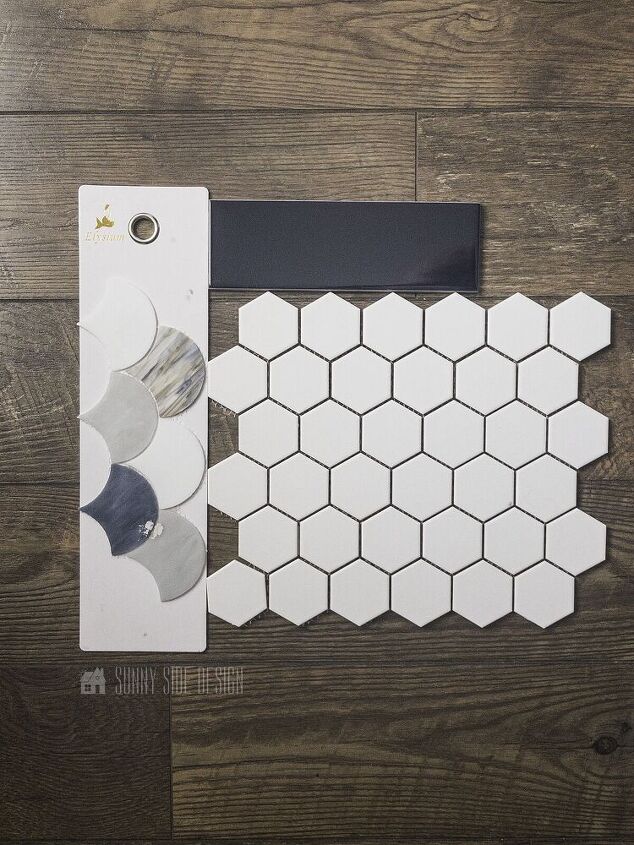


























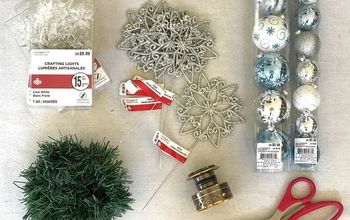
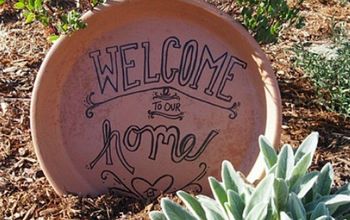




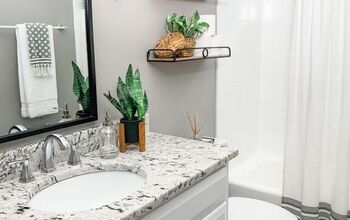
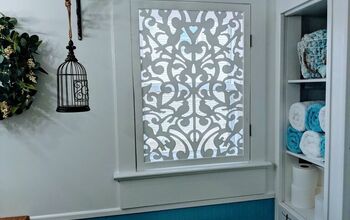


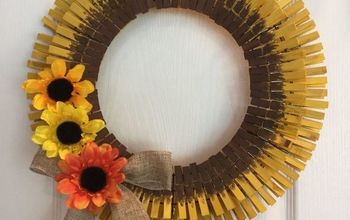
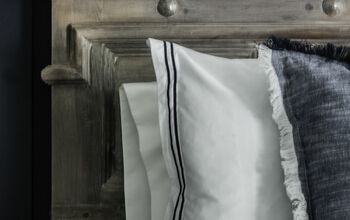

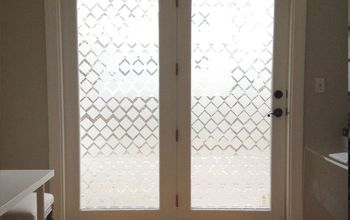




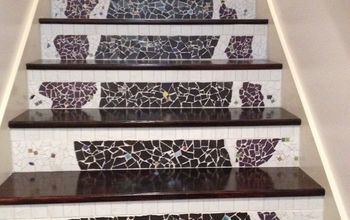



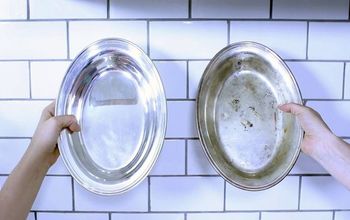
Frequently asked questions
Have a question about this project?
What kind of waterproofing did you use on the wall behind the tile?